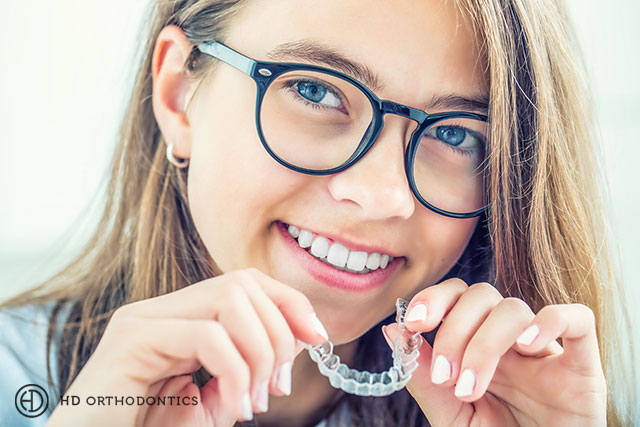If I have a more severe malocclusion, can I still use Invisalign?


Long Beach, CA – Invisalign changed the world of orthodontics when it came onto the scene, and the technology only continues to improve. Millions of patients love the clear, removable aligners because of their comfort and aesthetics. But is Invisalign the right treatment for everyone?
“Invisalign is fantastic and can help many different types of malocclusions,” says Dr. Heather Desh of HD Orthodontics. “But it may not be the most ideal option for more severe malocclusions. For some patients, we need to consider a combination treatment with standard braces to achieve a more ideal result. Every patient and their needs are different so we treat each case accordingly to find the best fit and compromise between aesthetics and efficiency.”
Let’s start by looking at what malocclusions Invisalign can easily help with:
- Crooked teeth
- Mild to moderate overbites
- Mild to moderate underbites
- Mild to moderate crossbites
- Gaps
- Open bites
- Mild to moderate crowding issues
There are some limitations to Invisalign treatment, especially if you want your treatment to remain as inconspicuous as possible. Invisalign just doesn’t have the same capabilities when it comes to applying force as other braces options do. Some issues that you may not think about can impede your ability to use Invisalign successfully.
“For many patients, we need to use buttons and attachments in conjunction with their Invisalign treatment in order to improve their smiles,” says Dr. Desh. “Attachments are small tooth colored dots that are bonded to the teeth. They are placed at precise locations to allow the aligner to grip the teeth properly and guide tooth movement. Buttons are used to attach rubber bands which are utilized to correct the bite. Bite correction is something that Invisalign alone cannot achieve.”
Some tooth movements just can’t be achieved with Invisalign aligners alone. Attachments can provide the anchor point to help direct the force of the aligner. One example is when severe crowding issues can result in rotated teeth. Teeth that are too rotated or tilted won’t be able to be pulled adequately to the ideal position using only aligners; attachments will definitely be needed to achieve these movements.
The shape of the teeth also comes into play when considering tooth movement. Some teeth are shaped in a way that won’t allow for the aligners to get the most ideal grip in order to apply the right amount of force to guide the teeth to their new locations. If your teeth are too short, rounded or pegged, the aligners may not be able to effectively move the teeth. In cases like this, attachments must be utilized to achieve these movements.
To learn more about if you may be an ideal candidate for Invisalign, call HD Orthodontics today.

